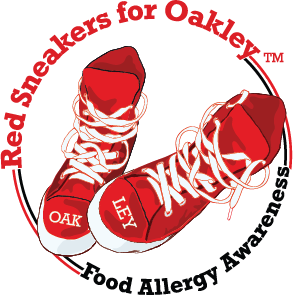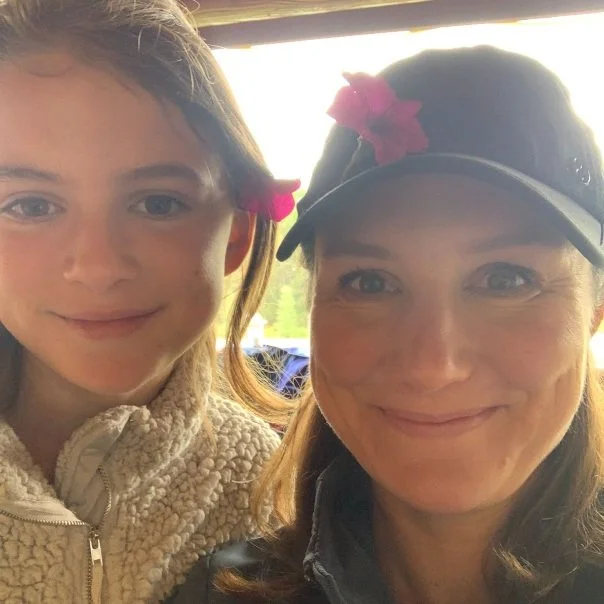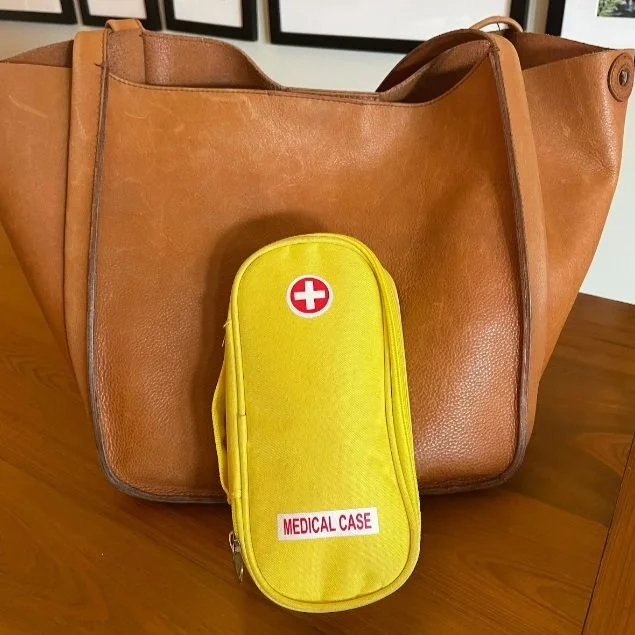Hi Allergy Mom. I see you, I’ve been there, and you’re not crazy. Really.
By Liz Voyles
I’m a mom of a child with severe allergies, and this is the story of my daughter’s allergy journey.
NEWBORN
Baby Emma, apple of my eye.
I knew something was not quite right when I fed my baby, but I couldn’t quite put my finger on it. Throughout my pregnancy, I read a lot about the health benefits of breastfeeding, so I was determined to exclusively breastfeed Emma. I would snuggle up with her in a quiet space to feed her. She would eagerly start to eat, and then stop a few seconds later, screaming and arching her back in pain. I knew she was still hungry, but she wouldn’t eat. It was a mystery. I thought breastmilk was supposed to be a magical elixir of health and nutrition - the most natural thing in the world. Why was it hurting my baby?
As a first time mom, I wasn’t confident I knew what to do, so I deferred to the experts. At her frequent newborn visits, I would explain that she wouldn’t eat. The pediatrician would suggest that babies just cry sometimes, and that I needed to be patient. The doctor suggested I put gentle pressure on her stomach to help her digest, and to just keep at it. I would go home and try to feed my infant until we were both in tears. After weeks of this cycle, the doctor referred me to a lactation consultant. At our first appointment, they asked whether I had food allergies in my family, and if I had tried cutting certain foods out of my diet. We made a plan to eliminate certain foods and slowly add them back in, in hopes of discovering the culprit. I wasn’t looking forward to my breakup with cheese and peanut butter, but the session gave me hope that someone had figured out a new angle on solving whatever was going on with my precious baby’s health.
The lactation consultant was the first woman who looked into my tear-filled eyes and told me she understood. She assured me I wasn’t crazy. It was a hard day, but now I look back and see it as the beginning of Emma’s allergy care journey. We started to put one foot in front of the other.
Through a series of experiments with my diet, and then with tests in her allergist’s office, Emma ended up being diagnosed with severe allergies to dairy, peanut, and egg. I remember each allergen weighing heavy on my mind, a new threat that seemed to be omnipresent. At the same time, we also had answers, which was clarifying. My husband and I started to get our minds wrapped around what this meant for our family.
TODDLER
Emma in Pre-K, Photo Credit: Djenno Bacvic
Then came a new phase of Emma’s life, my parenthood, and our family’s rhythms: school. Emma entered our neighborhood public school at the age of three. She joined a bright and cheery Pre-K classroom just down the street from our house, equipped with a library of picture books and lots of tiny chairs.
I remember tearing up that first day. I was proud that she was ready to walk through the schoolhouse door with that disproportionately huge backpack on her little body, but I also felt a deep anxiety about broadening her small group of caregivers to be a much bigger circle. We went from a daycare where she had two teachers, and my husband and I at home, to about a dozen adults who cared for her at different times of day. In her orbit, she had two homeroom teachers, multiple lunchroom workers, plus art teachers, librarians, aftercare supervisors, and various substitute teachers who would need to know how to care for her severe allergies.
Communicating about Emma’s life-threatening condition, how to recognize anaphylaxis, and how to find her epinephrine injector, became a much more complex task. I started asking about where exactly her epinephrine injector was kept at school, and whether it could be accessed quickly in an emergency. Where would the school keep the forms I filled out with her doctor, explaining what she was allergic to? Where would they post the plans on how to recognize and respond if she was experiencing a life-threatening reaction?
The answers to these questions were dismaying, and it was clear my plan had about as many holes as a piece of Swiss cheese. I learned that her epinephrine injector was kept in a locked cabinet, inside of a locked nurse’s office. The nurse only worked part time, and like many other staff members, often took lunch off the school campus. The backup key was held by an overstretched administrator who was not necessarily at her desk for many of the hours of the day. This made the medicine essentially unavailable for much of the time. If Emma went on a field trip, her epinephrine injector would not typically travel with her, and the school staff who were with her did not know how to administer the medicine in an emergency.
When my husband and I met with the nurse and administrator, we were told not to worry. That they had it handled, and that we should stand down. No further action was warranted. We left the meeting feeling vexed. They didn’t get it.
Luckily, I found an ally in the school administration who listened to me and took me seriously. She told me I wasn’t crazy, just like the lactation consultant did years before. She guided me through the process of setting up something called a 504 Plan which would allow my child to carry an epinephrine injector in her backpack, in case of emergency. We set up systems to communicate consistently with the caring adults all around my child, who sincerely wanted to help, but it was a heavy lift.
TODAY
Emma and me, summer 2021
Over time, we learned how to manage Emma’s allergy, and we became bolder in our advocacy for our child. Eventually, she started speaking up about her own allergy care, and now, at the age of 10, she travels her community able to assert herself and explain to those around her what she is allergic to and what she needs to be safe. She makes her father and me so proud.
I look back at those early days when we struggled to set up systems to protect her. The Backstop app didn’t exist yet, but I now know that it is exactly what I was looking for as I was searching around in the dark for solutions.
Anaphylaxis, by nature, is an urgent emergency, where the caregiver has minutes - sometimes seconds - to respond to a life-threatening situation. There is no time for learning on the job when a child is struggling to breathe. I wish every teacher, babysitter, camp counselor, and every one of Emma’s family members had a guide to anaphylaxis with a quick video on how to inject epinephrine in their back pocket so they could respond quickly and confidently in an emergency. It would have been such a relief for me to know that they were prepared, and it would have made me feel that I had done my job as Emma’s mom to create a full nest of prepared caregivers that surrounded her, no matter where she was.
The good news is that we have that now. She’s a healthy, vibrant adolescent, who loves school, plays piano, hikes in the woods, and creates art in an after school program that she adores. She goes everywhere with what we call the “Emma football” - a bright yellow case that contains her epinephrine injector and inhaler. She is surrounded by adults who know what she is allergic to, how to recognize anaphylaxis, and what to do in an emergency.
We go everywhere with “The Emma Football”
That’s why I’m in the Backstop Community, and I invite you to join me. I was so lucky to find the right allies along the way, who took me seriously, assured me I wasn’t crazy, and helped our family set up systems to manage our child’s condition. I’m part of this community because I know that when parents are equipped with the right information and tools, kids with allergies do better and can lead fuller lives.
She’s not anxious about food, and her mom and dad know they’re not crazy. Her life is full, and she has a team of caring adults who love her and have her back.
So in case no one has told you yet today: You’re not crazy. You’re in the right place. We’re in this together.




